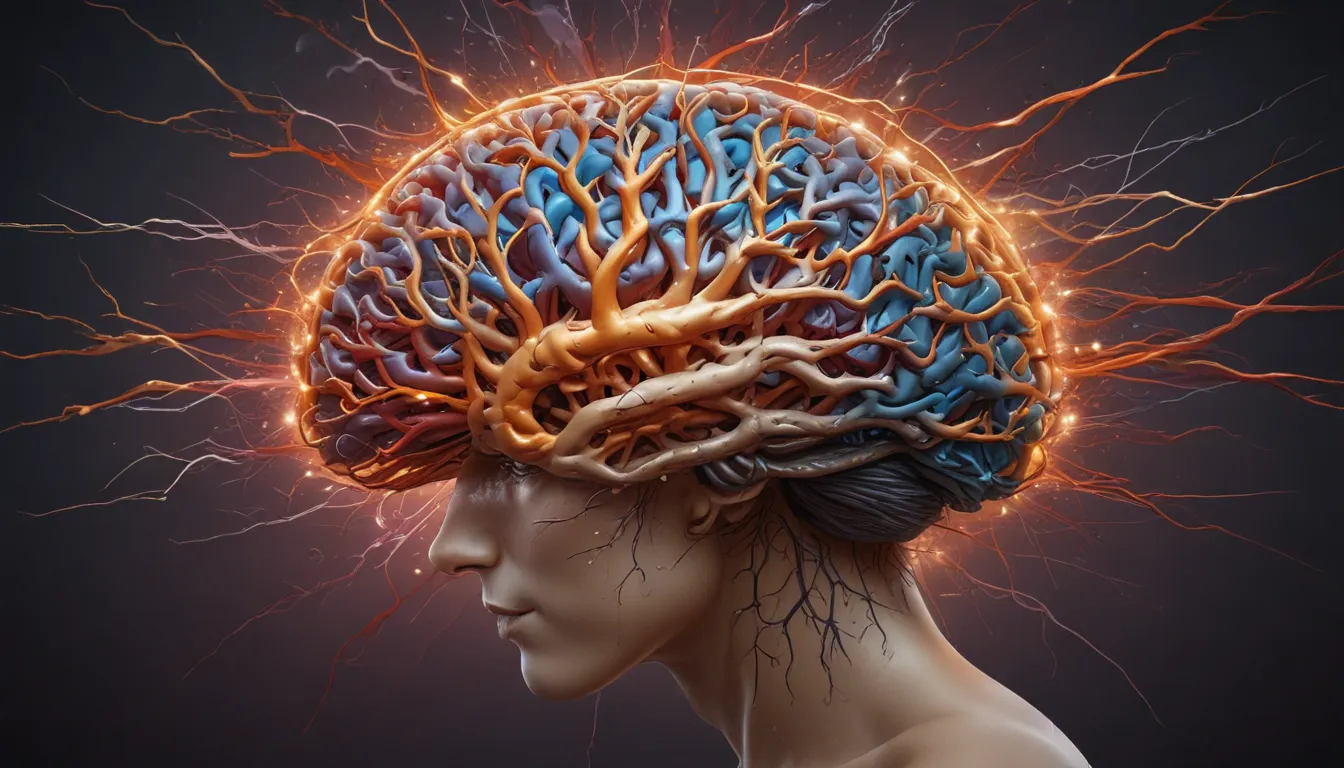A Note About Images: The images used in our articles are for illustration purposes only and may not exactly match the content. They are meant to engage readers, but the text should be relied upon for accurate information.
Neuroplasticity, also known as brain plasticity, is a captivating phenomenon that has reshaped our understanding of the human brain. Contrary to the belief that the brain is a static and unchangeable organ, neuroplasticity reveals that it has the extraordinary ability to reorganize and rebuild itself throughout our lives. In this article, we will embark on a journey into the captivating world of neuroplasticity and unearth 19 intriguing facts about this remarkable adaptive process. From exploring how our brains can form new connections to discovering the profound impact of neuroplasticity on learning, memory, and recovery from injury, we will uncover the awe-inspiring capabilities of the brain.
Unlocking the Mysteries of Neuroplasticity: Key Takeaways
- Your brain is like a superhero that can change and adapt throughout your entire life, aiding in learning new things, recovering from injuries, and enhancing mental health through neuroplasticity.
- Just like a muscle, your brain becomes stronger and more flexible when challenged with new activities and positive habits. Understanding neuroplasticity can unlock your brain’s full potential for a supercharged life!
The Adaptive Marvel of Neuroplasticity
Neuroplasticity refers to the brain’s remarkable ability to adapt and rewire its connections in response to learning, experience, and injury. It is a dynamic process that continues throughout our lives, debunking the misconception that the brain stops developing after a certain age. Research has shown that neuroplasticity shapes our brains, enabling us to learn new skills and adapt to new environments.
The Symbiotic Relationship Between Learning and Neuroplasticity
Learning and neuroplasticity are closely intertwined. When we engage in new experiences, such as learning a new language or mastering a musical instrument, our brain forms new neural connections and modifies existing ones through neuroplasticity. This process enhances our ability to store and retrieve information efficiently, contributing to our cognitive growth.
Nurturing Neuroplasticity Through Daily Habits
Our daily habits and behaviors play a significant role in influencing neuroplasticity. Activities such as meditation, exercise, and tackling challenging cognitive tasks can enhance neuroplasticity and promote brain health. By engaging in these practices, we can harness the power of neuroplasticity to optimize our brain function.
The Healing Power of Neuroplasticity in Brain Injuries
Neuroplasticity plays a crucial role in the recovery process from brain injuries. In instances of stroke, trauma, or disease, neuroplasticity allows the unaffected areas of the brain to compensate for lost functions by rewiring neural pathways. This adaptive process enables individuals to regain and restore cognitive functions post-injury.
Extending Beyond the Brain: Neuroplasticity in the Nervous System
While neuroplasticity is commonly associated with the brain, other parts of the nervous system, such as the spinal cord, also possess the ability to reorganize and adapt. This adaptive capability of the nervous system underscores the interconnectedness and flexibility of the entire neural network.
Mitigating the Impacts of Chronic Stress on Neuroplasticity
Chronic stress can impede neuroplasticity and lead to cognitive deficits and mental health issues. Managing stress through relaxation techniques and engaging in stress-reducing activities can help preserve and enhance neuroplasticity. By prioritizing stress management, we can safeguard our brain’s adaptive potential.
The Interplay of Genetics and Environment in Influencing Neuroplasticity
Genetics establishes a baseline level of neuroplasticity, while environmental factors such as education, social interactions, and level of stimulation significantly impact its extent. The interaction between genetics and environment shapes an individual’s neuroplasticity capacity, highlighting the multifaceted nature of this adaptive process.
Embracing the Unique Neuroplasticity of Each Individual
Every individual’s brain exhibits a unique capacity for neuroplasticity, influenced by factors like age, genetics, and prior experiences. Understanding the personalized nature of neuroplasticity underscores the importance of tailored approaches to optimize brain function and adaptability for each person.
Harnessing Neuroplasticity for Mental Health Treatment
Therapeutic interventions leveraging neuroplasticity, such as cognitive-behavioral therapy and mindfulness practices, show promise in treating mental health disorders like depression, anxiety, and PTSD. By utilizing neuroplasticity-informed treatments, individuals can foster positive changes in neural circuits associated with mental well-being.
Skill Acquisition: Neuroplasticity in Action
Neuroplasticity plays a pivotal role in skill acquisition. Whether mastering a new dance routine or learning to ride a bike, neuroplasticity facilitates the development and refinement of motor skills. By actively engaging in skill-building activities, individuals can capitalize on their brain’s adaptive potential for enhanced learning and proficiency.
The Dynamic Nature of Neuroplasticity: Rapid Changes and Adaptations
Studies have demonstrated that the brain can undergo significant changes within a short timeframe, showcasing the dynamic and rapid nature of neuroplasticity. This capacity for swift adaptations underscores the brain’s agility and responsiveness to new experiences and challenges.
Unveiling the Dark Side of Neuroplasticity: Maladaptive Changes
In conditions such as chronic pain or addiction, the brain can undergo maladaptive neuroplasticity, leading to persistent pain signals or addictive behaviors. Understanding the potential negative consequences of neuroplasticity highlights the importance of promoting healthy patterns of neural rewiring.
Aging, Dementia, and the Role of Neuroplasticity
As individuals age, neuroplasticity tends to decline, contributing to cognitive impairment and the onset of neurodegenerative diseases like Alzheimer’s. However, engaging in mentally stimulating activities can help mitigate these processes by fostering neural engagement and adaptive changes in the brain.
Delving into the Complexity of Neuroplasticity: Structural and Functional Transformations
Neuroplasticity encompasses a myriad of mechanisms, including the formation of new synapses, the strengthening or weakening of existing connections, and the reorganization of neural networks. These structural and functional changes underscore the complexity and adaptability of the brain’s neural architecture.
Advancements in Brain Rehabilitation Through Neuroplasticity
Research on neuroplasticity has driven innovations in brain rehabilitation techniques, offering novel approaches to assist individuals with brain injuries. Strategies such as constraint-induced movement therapy and virtual reality-based interventions leverage the principles of neuroplasticity to facilitate neural recovery and functional improvements in patients.
Optimizing Learning and Memory Through Neuroplasticity
By applying neuroplasticity-informed techniques such as spaced repetition, multisensory learning, and mnemonic devices, individuals can enhance their brain’s capacity to retain and recall information. These strategies capitalize on the brain’s adaptive nature to optimize learning outcomes and memory retention.
Exploring Neuroplasticity at Various Levels: From Cells to Brain Remodeling
Neuroplasticity can be observed at different levels, spanning from cellular changes to large-scale brain remodeling. Researchers utilize diverse techniques, including neuroimaging and animal models, to investigate the intricate facets of neuroplasticity and unravel its implications for brain function and adaptability.
The Thriving Field of Neuroplasticity Research
Neuroplasticity research is a dynamic and burgeoning field, characterized by ongoing discoveries and advancements in understanding the mechanisms and applications of neuroplasticity. Scientists continue to push the boundaries of knowledge, offering promising insights into brain health, rehabilitation, and cognitive enhancement through neuroplasticity.
Navigating the Path of Neuroplasticity: Embracing the Brain’s Adaptive Potential
Neuroplasticity unveils the brain’s incredible adaptability and capacity for change, shaping the landscape of neuroscience and cognitive enhancement. By delving into the realms of neuroplasticity, we unearth a wealth of possibilities for optimizing brain function, recovering from injuries, and enriching cognitive experiences. Embracing the concept of neuroplasticity empowers us to unlock the full potential of our brains and embark on a journey of continuous growth and evolution.
FAQs: Unraveling Neuroplasticity Mysteries
-
What is neuroplasticity?
Neuroplasticity refers to the brain’s ability to change and reorganize its structure and functions in response to new experiences, learning, and environmental demands. -
Is neuroplasticity only limited to certain age groups?
No, neuroplasticity occurs throughout our entire lifespan. While more pronounced during childhood, the brain can rewire itself and form new connections even in adulthood. -
Can neuroplasticity be harnessed for rehabilitation purposes?
Absolutely! Neuroplasticity is a foundational principle in neurorehabilitation. Through targeted therapies and interventions, individuals can retrain their brains to regain lost functions and recover from neurological conditions or injuries. -
How can I enhance neuroplasticity?
Engaging in activities that challenge your brain, such as learning a new language, playing a musical instrument, or solving puzzles, can stimulate neuroplasticity. Maintaining a healthy lifestyle, including regular exercise and proper nutrition, also supports brain plasticity. -
Can neuroplasticity help with memory improvement?
Yes, neuroplasticity plays a crucial role in memory formation and consolidation. By actively participating in memory exercises, practicing mindfulness, and employing memory-enhancing techniques, you can strengthen the neural pathways associated with memory. -
Does neuroplasticity have any impact on mental health?
Yes, neuroplasticity is closely tied to mental health. It enables changes in neural circuits involved in emotions, behavior, and cognition, offering potential for treating mental health disorders like depression, anxiety, and addiction.
Embark on a Quest for Knowledge
Neuroplasticity’s captivating facts showcase the brain’s remarkable adaptability and resilience. As you explore the intricacies of this incredible process, your curiosity may lead you to delve into other fascinating aspects of brain function. Consider unraveling the extraordinary capabilities of the cerebellum, a brain region crucial for motor control, coordination, and cognitive functions. By expanding your understanding of the brain’s complexities, you’ll gain a newfound appreciation for its versatility and ingenuity. Allow your curiosity to guide you as you journey onward into the enthralling world of neuroscience!
We Value Your Feedback
Our dedication to delivering reliable and engaging content is at the core of our mission. Each fact presented on our platform is contributed by individuals like you, bringing a rich tapestry of diverse insights and information. To uphold the highest standards of accuracy and authenticity, our diligent editors meticulously review every submission. Rest assured that the facts we share are not just intriguing but also credible. Trust in our commitment to quality and genuineness as you immerse yourself in exploration and learning with us.





